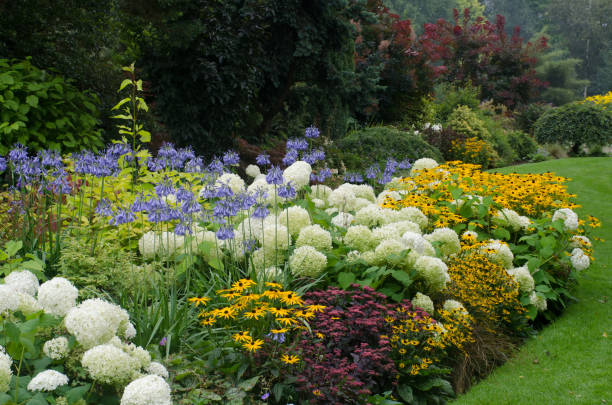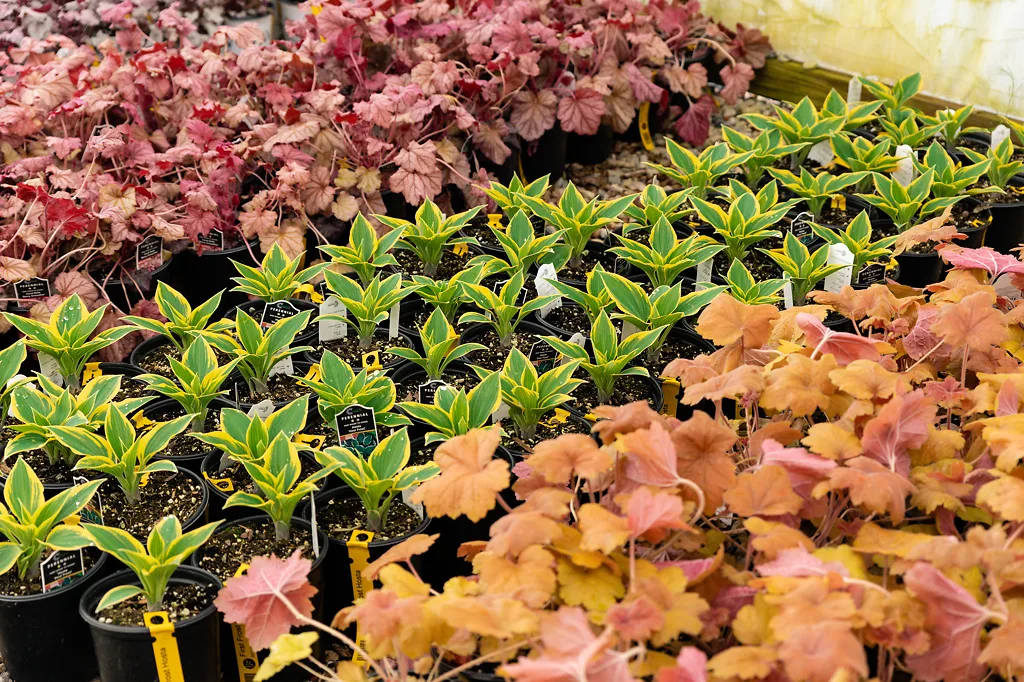
Written by s • The English Flower Garden
After our last ‘Garden Styles’ blog on the Classic American Garden, we are going to step outside the US for a moment to look at the most influential garden style of the last half of the 20th century – the English Flower Garden. You might no longer aspire to this, perhaps because it takes lots of work and dedication to pull it off well, but there are two reasons to still take a look at it. First, it’s inspirational for gardens even today, and even if you don’t create one, because it brought us perennial flowers, kicking out annuals like petunias and geraniums. Secondly, it led to the style for our next blog, the New American Garden – a prairie-inspired hybrid with the English Flower Garden that fueled a whole new way of handling perennial plants. The New American Garden brought grasses front and center, and is one of the dominant styles today – being more practical and less work – and still making a powerful statement in your garden.
Annual Flowers and Carpet Bedding
The 19th century saw the arrival in Europe and America of many, many new plants. Most of these came from the tropical and sub-tropical colonies that nations were establishing, or from countries where the West had lots of influence – like South America. The problem in Europe and most of America was that these plants didn’t take frost, so they couldn’t be grown outdoors year-round. The solution was greenhouses – big and bigger greenhouses, staffed by teams of gardeners producing hundreds and even thousands of plants. These were put out in the garden beds – ‘bedded out’ – several times a year, using small hardy evergreens for winter. Inspired by much earlier grand gardens that laid out elaborate geometrical designs in colored gravels framed in boxwood hedges, this new style replaced the gravels with colored plants, often trimmed and groomed to keep them neat, compact and low. Check out the result – not to everyone’s taste perhaps, but certainly impressive work.
The Backlash
You probably don’t think much of that style, but for some in the later 19th century, it inspired violent loathing and hatred. One young gardener was so driven crazy by it that William Robinson put out the greenhouse boilers and opened all the vents one cold winter night on the Irish estate he worked at and ran off to seek his fortune a different way (or so the story goes).
Robinson would have been right at home today, because he was among the first to see the garden potential of wild flowers – not just those of Europe, but from cooler climates around the world. In other words, he invented gardening with perennials. Robinson’s book, ‘The Wild Garden’, and even more his magazine, ‘The Garden’, transformed the English in particular from an addiction to garish colors and the ‘feeble folies’ of annual bedding, and converted them to gardening with hardy plants that didn’t need winter protection.
A close friend and colleague in his campaign is even better remembered today. This was Gertrude Jekyll, who began life as a painter, and ended up painting with plants. The time coincided with a new interest in color harmony, and Jekyll took what she had learned as a painter, mainly from the Impressionists, who were in turn influenced by the color theories of Michel Eugène Chevreul, a French chemist. Jekyll began to blend colors in new ways, and create gradual changes moving around the garden, or with the seasons. Working with the architect Edward Lutyens, she devised now-familiar ways of creating continuous color through the seasons with perennials, and built elaborate ‘herbaceous borders’ that still dominate many ‘high-end’ British gardens today.
Many of the plants used in these beds are familiar to us today – iris, phlox, daylilies, coneflowers, asters, delphiniums, catmint, lupins – the list is long. It didn’t matter where on the planet they came from, or if they were improved garden versions of the original wild plants – what mattered was when they bloomed, and how their colors could be blended with the colors of other plants in bloom at the same time. It’s a concept that remains valuable today.
The English Flower Garden
Of course, large gardens needed more than a couple of herbaceous borders. They needed flowering shrubs and trees – lilacs were popular, and roses of course. But in this kind of garden perennials dominate, used in front of shrubs, along paths, and beside lawns. The result was gardens that bloom continuously, with one flower followed by another, from spring into fall – a garden built around flowers.
Building Herbaceous Borders and Flower Gardens
You can easily find, on our site or others, how to grow individual perennials. Information on how to organize plantings is much harder to find, so let’s end with some practical advice.
If you aspire to an English Flower Garden, here are some tips:
- A bed that is seen from one end, rather than from the front, looks fuller and richer. You need a minimum size of about 30 feet long and 4 feet deep to put together a bed that looks good for a long season. The famous gardens have beds that are at least 100 feet long and perhaps 10 feet deep.
- Prepare the bed well, with lots of organic material, and dig it as deeply and as thoroughly as you can. Mulch every fall, or every second fall with rich composts, and watch the plants thrive
- Find a seasonal progression of blooming, and notice how each season’s dominant plants produce a dominant color palette of blended colors – here, for example, is one for the northeast, starting in spring and ending in fall:
- Daffodils followed by tulips – yellows, oranges, whites and scarlet-reds
- Peonies and Iris – pinks, purples, burgundy-reds and blues
- Daylilies, catmint and delphiniums – oranges, yellows, purples and blues
- Phlox and coneflowers – pinks and purples
- Asters and sedum – old-rose pinks, purples, blues and hot reds
- Find secondary flowers for each season that have suitable colors.
- Place the plants of each season as if they was all you had – randomly along the bed – don’t group seasons, unless you want to create seasonal beds. The bulbs are placed at the end, in the spaces between the plants, that will be open areas in spring.
- Allow plants plenty of room – it’s amazing how much growth a mature perennial clump makes in a season – and you need to be able to pass through the plants too.
Working with Color
In an English Flower Garden it might look like random arrangements, but it usually isn’t. Most colors are easy to put together, but some cause problems, particularly when using reds and yellows.
To blend these colors successfully we should think of how in reality there are two reds and two yellows. The two reds are scarlets, reds with orange tones in them, and burgundies, reds with purple tones in them. The scarlets go with oranges and yellows, the burgundies with pinks and purples.
Looking at yellows, there are greenish or ‘acid’ yellows that will go with burgundies and purples, and golden yellows that will go with oranges. If you haven’t thought about these differences before it can be a bit tricky to train your eye to distinguish them – fool around with some watercolor paints and it will soon become clear.
Start Gardening with Perennials
Next week we will look at the New American Garden – an offshoot of the English Flower Garden more suited to modern times, with less time for the garden, and the need for more self-sufficient plants. But the tips here apply in those gardens too, even if not many of us have the time to make these intense gardens around our own homes.






